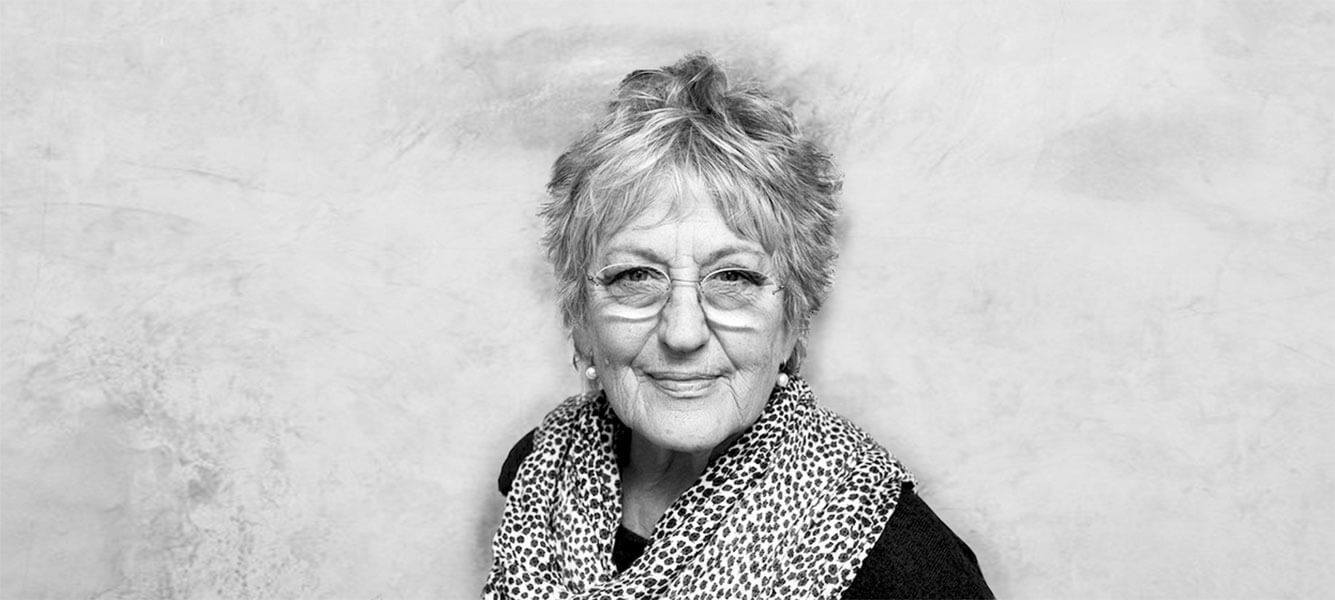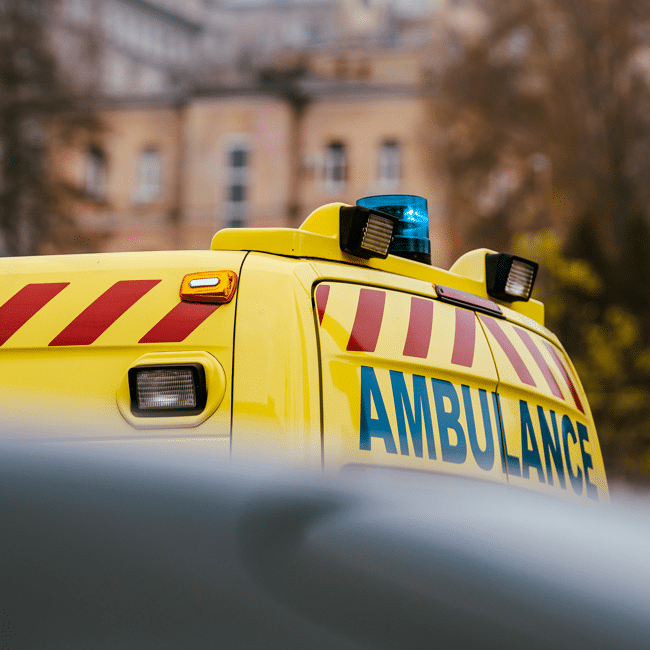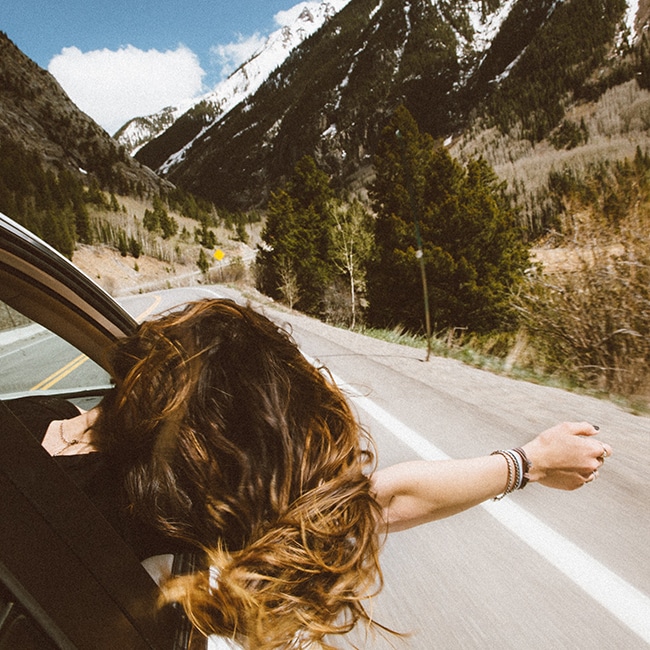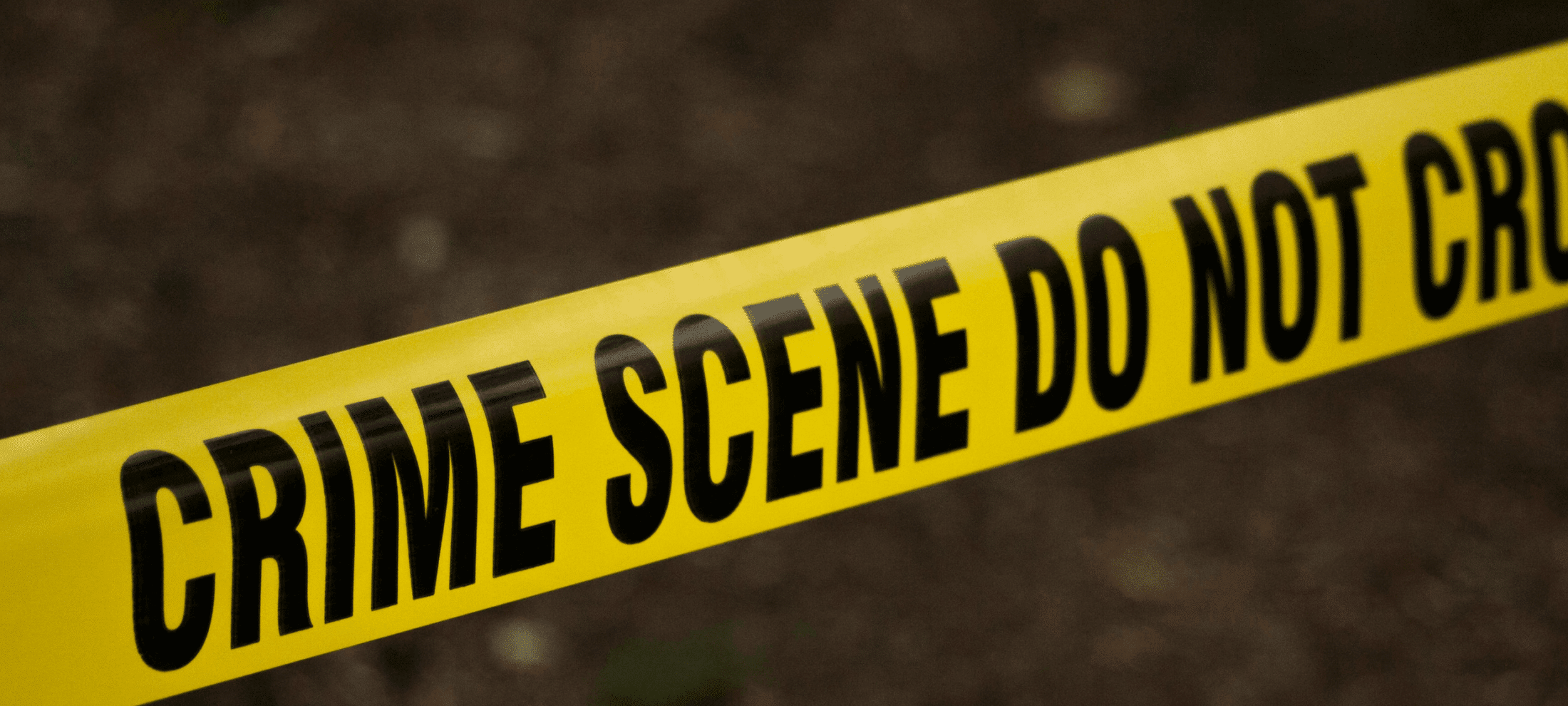ESG is not just about ticking boxes, it’s about earning the public’s trust

ESG is not just about ticking boxes, it’s about earning the public’s trust
Opinion + AnalysisBusiness + LeadershipClimate + EnvironmentRelationships
BY Cris Parker The Ethics Alliance 3 MAY 2023
If businesses want to earn the public’s trust, they need to take ESG seriously, and communicate what they’re doing authentically and transparently.
In the eyes of today’s public, businesses must do more than just provide quality products and services, they also have a responsibility to be good corporate citizens and make a positive contribution to society and the environment. This is one reason why so many businesses have made a commitment to Environmental, Social and Governance (ESG) standards.
ESG is a framework used to assess a business’s activities and performance on ethical and sustainable issues. This includes an organisation’s ability to safeguard the environment, manage relationships with employees, supply chains and the community, and how company leadership, shareholder rights and internal controls monitor the outcomes. Importantly, the framework serves as a tool to assess how an organisation manages risks and opportunities in our changing world.
The problem is that most members of the public don’t have a good understanding of ESG. According to the SEC Newgate ESG Monitor report, only 12% of Australians had a “good understanding” of ESG. This disconnect between ESG activities and public perception is a problem because it undermines trust in business, especially if ESG activities have been misrepresented.
Members of the Ethics Alliance gathered in April 2023 to discuss the importance of SEC Newgate’s research and consider challenges that organisations face in the way they address ESG and community expectations.
For starters, the ESG Monitor indicated that 38% of Australians feel completely uninformed about companies’ ESG activities. Interestingly, it also suggested 72% of people either “never” or “rarely” look at the ESG reporting, while only a mere 8% of people trust ESG reporting.
Some of this scepticism around ESG may have been cultivated due to it politicisation. In April 2023 the leader of the opposition, Peter Dutton, commented: “To be frank, some business leaders need to stop craving popularity on social media by signing up to every social cause, even though they may not believe in it.” This attitude acts in contrast to the global research from the 2023 Edelman Trust Barometer that shows 82% of people expect CEOs to take a public stand on climate change. And to Dutton’s point, they certainly expect authenticity.
The public holds high expectations for businesses to use their influence for good. SEC Newgate’s study showed that of those surveyed, 80% agree that companies have a responsibility to behave like good citizens and consider their impact on other people and the planet. It also showed that 66% of people are also willing to give a company a second chance if it was transparent about its mistake and stated how it would do better in the future.
If businesses want to live up to community expectations and strengthen their social value, then they need to carefully choose which ESG initiatives to focus on and ensure they have legitimacy in those areas. When evaluating, they should ask the following: Is it genuine? Is it meaningful? Is the organisation committed? And how do I know for sure or where is the proof?
By demonstrating a clear link between sustainability efforts and overall strategy, businesses can better align their initiatives with community expectations.
One starting point is a materiality assessment, which is a process to identify and prioritise the most relevant and significant ESG factors that have a substantial impact on the business’s operations, financial performance and stakeholder interests. This exploration can help identify the most pressing issues that align with the purpose and resonate with the community.
Other principles for organisations to consider when developing their ESG framework that emerged from The Alliance’s discussions were:
- Ethical conduct – including treating employees fairly, avoiding unethical practices, and minimising environmental harm.
- Giving back – which may involve investing in local communities, adopting environmentally friendly practices, or supporting social initiatives.
- Transparency and accountability –stakeholders, including consumers, employees, and shareholders, often have differing perspectives on ESG issues, making it challenging for businesses to balance these conflicting demands and trade-offs.
Communication also needs to be well considered by organisations in order to address the disconnect between the community’s need for transparent ESG information and their desire to learn about it. Connecting with stakeholders transparently about an organisation’s progress and mistakes can help meet these challenges.
ESG is about more than just accounting. It’s demonstrating a business’s responsibility and recognising the importance of sustainable practices in safeguarding our planet. ESG needs to be a whole company effort that is undertaken authentically and communicated transparently to the public that reflects its purpose, values and principles. The more businesses that do this, the more the public will understand what ESG is and the more they will come to trust businesses as being responsible corporate citizens.
Ethics in your inbox.
Get the latest inspiration, intelligence, events & more.
By signing up you agree to our privacy policy
You might be interested in…
Opinion + Analysis
Relationships, Society + Culture
Breakdowns and breakups: Euphoria and the moral responsibility of artists
Opinion + Analysis
Business + Leadership
Pay up: income inequity breeds resentment
Opinion + Analysis
Politics + Human Rights, Relationships, Society + Culture
In the face of such generosity, how can racism still exist?
Explainer
Relationships
Ethics Explainer: Authenticity
BY Cris Parker
Cris Parker is the former Head of The Ethics Alliance and a Director of the Banking and Finance Oath at The Ethics Centre.
BY The Ethics Alliance
The Ethics Alliance is a community of organisations sharing insights and learning together, to find a better way of doing business. The Alliance is an initiative of The Ethics Centre.
The ethical dilemma of the 4-day work week

The ethical dilemma of the 4-day work week
Opinion + AnalysisHealth + WellbeingBusiness + Leadership
BY The Ethics Centre 12 APR 2023
Ahead of an automation and artificial intelligence revolution, and a possible global recession, we are sizing up ways to ‘work smarter, not harder’. Could the 4-day work week be the key to helping us adapt and thrive in the future?
As the workforce plunged into a pandemic that upended our traditional work hours, workplaces and workloads, we received the collective opportunity to question the 9-5, Monday to Friday model that has driven the global economy for the past several decades.
Workers were astounded by what they’d gained back from working remotely and with more flexible hours. Not only did the care of elderly, sick or young people become easier from the home office, but also hours that were previously spent commuting shifted to more family and personal time.
This change in where we work sparked further thought about how much time we spend working. In 2022, the largest and most successful trial of a four-day working week delivered impressive results. Some 92% of 61 UK companies who participated in a two-month trial of the shorter week declared they’d be sticking with the 100:80:100 model in what the 4 Day Week director Joe Ryle called a “major breakthrough moment” for the movement.
Momentum Mental Health chief executive officer Debbie Bailey, who participated in the study, said her team had maintained productivity and increased output. But what had stirred her more deeply was a measurable “increase in work-life balance, happiness at work, sleep per night, and a reduction in stress” among staff.
However, Bailey said, the shorter working week must remain viable for her bottom line, something she ensures through a tailor-made ‘Rules of Engagement’ in her team. “For example, if we don’t maintain 100 per cent outputs, an individual or the full team can be required to return to a 5-day week pattern,” she explained.
Beyond staff satisfaction, a successful implementation of the 4-day week model could also boost the bottom line for businesses.
Reimagining a more ethical working environment, advocates say, can yield comprehensive social benefits, including balancing gender roles, elongated lifespans, increased employee well-being, improved staff recruitment and retention and a much-needed reduction in workers’ carbon footprint as Australia works towards net-zero by 2050.
University of Queensland Business School’s associate professor Remi Ayoko says working parents with a young family will benefit the most from a modified work week, with far greater leisure time away from the keyboard offering more opportunity for travel and adventure further afield, as well as increased familial bonding and life experiences along the way.
However, similar to remote work, the 4-day working week has not been without its criticisms. Workplace connectivity is one aspect that can fall by the wayside when implementing the model – a valuable culture-building part of work, according to the University of Auckland’s Helen Delaney and Loughborough University’s Catherine Casey.
Some workers reported that “the urgency and pressure was causing “heightened stress levels,” leaving them in need of the additional day off to recover from work intensity. This raises the question of whether it is ethical for a workplace to demand a more robotic and less human-focussed performance.
In November last year, Australian staff at several of Unilever’s household names, including Dove, Rexona, Surf, Omo, TRESemmé, Continental and Streets, trialed a 100:80:100 model in the workplace. Factory workers did not take part due to union agreements.
To maintain productivity, Unilever staff were advised to cut “lesser value” activities during working hours, like superfluous meetings and the use of staff collaboration tool Microsoft Teams, in order to “free up time to work on items that matter most to the people we serve, externally and internally”.
If eyebrows were raised by that instruction, they needed only look across the ditch at Unilever New Zealand, where an 18-month trial yielded impressive results. Some 80 staff took a third (34%) fewer sick days, stress levels fell by a third (33%), and issues with work-life balance tumbled by two-thirds (67%). An independent team from the University of Technology Sydney monitored the results.
Keogh Consulting CEO Margit Mansfield told ABC Perth that she would advise business leaders considering the 4-day week to first assess the existing flexibility and autonomy arrangements in place – put simply, looking into where and when your staff actually want to work – to determine the most ethically advantageous way to shake things up.
Mansfield says focussing on redesigning jobs to suit new working environments can be a far more positive experience than retrofitting old ones with new ways. It can mean changing “the whole ecosystem around whatever the reduced hours are, because it’s not just simply, well, ‘just be as productive in four days’, and ‘you’re on five if the job is so big that it just simply cannot be done’.”
New modes of working, whether in shorter weeks or remote, are also seeing the workplace grappling with a trust revolution. On the one hand, the rise of project management software like Asana is helping managers monitor deliverables and workload in an open, transparent and ethical way, while on the other, controversial tracking software installed on work computers is causing many people, already concerned about their data privacy, to consider other workplaces.
It is important to recognise that the relationship between employer and employee is not one-sided and the reciprocation of trust is essential for creating a work environment that fosters productivity, innovation and wellbeing.
While employees now anticipate flexibility to maintain a healthy work-life balance, employers also have expectations – one of which is that employees still contribute to the culture of the organisation.
When employees are engaged and motivated they are more likely to contribute to the culture of the organisation which can inform the way the business interacts with society more broadly. Trust reciprocation is not just about meeting individual needs but also working together on a common purpose. By prioritising the well-being of their employees and empowering them to contribute to the culture of the organisation a virtuous cycle is being created. Whether this is a 4-day working week or a hybrid structure is for the employer and employee to explore.
CEO of Microsoft, Satya Nadella says forming a new world working relationship based on trust between all parties can be far more powerful for a business than building parameters around workers. After all, “people come to work for other people, not because of some policy”.
Ethics in your inbox.
Get the latest inspiration, intelligence, events & more.
By signing up you agree to our privacy policy
You might be interested in…
Opinion + Analysis
Health + Wellbeing, Business + Leadership
Repairing moral injury: The role of EdEthics in supporting moral integrity in teaching
Opinion + Analysis
Business + Leadership
Do Australian corporations have the courage to rebuild public trust?
Opinion + Analysis
Business + Leadership
Self-interest versus public good: The untold damage the PwC scandal has done to the professions
Opinion + Analysis
Business + Leadership
Banks now have an incentive to change
BY The Ethics Centre
The Ethics Centre is a not-for-profit organisation developing innovative programs, services and experiences, designed to bring ethics to the centre of professional and personal life.
Can philosophy help us when it comes to defining tax fairness?

Can philosophy help us when it comes to defining tax fairness?
Opinion + AnalysisBusiness + LeadershipPolitics + Human Rights
BY Joshua Pearl 31 MAR 2023
Nothing is certain, except death and taxes. We can’t make the former fair but we can at least try when it comes to taxation.
Tax is fundamental to government. It is essential to fund the services we require to live in a modern society, including military, police, judiciary, roads, healthcare and education. It has also become more important in recent decades. At the time of Federation, the Australian tax system collected around 5% of GDP. Today this number stands at around 29%.
But is it fair? Are we paying too little or too much tax? Should those with greater means pay more? These are questions that must be asked of any tax system, and two works by philosophers offer very different answers.
The first is Robert Nozick’s Anarchy State and Utopia. It argues that individuals (and, by extension, the corporations they own) ought to own 100% of their income. Individual property rights are paramount, and any taxation beyond what is required to protect borders and protect these property rights is unjust. In short: only public expenditure on the police and military can be justified.
One of Nozick’s more colourful claims is that taxation is on par with forced labour. Tax forces workers to work in part for themselves, and in part for government.
But while Anarchy State and Utopia is a cult favourite of many modern-styled libertarians arguing for lower taxes, most people consider its position on tax unfair. Many find the consequences of the gross inequalities Nozick permits objectionable, while others argue a child’s right to public education, or a citizen’s right to universal healthcare, outweighs the right individuals or corporations have to their pre-tax wealth and income.
An additional issue for Nozick is how to determine who funds the military and police. Should it be a fee for service? And if so, does this mean only the very wealthy who pay tax should enforce property rights, given they have the most to benefit and lose without military and police? Or should everyone pay an equal amount of tax, regardless of their income or wealth or their ability to pay? (The fallout of this was seen in the 1990’s in the UK when a Thatcher Government head tax proposal was met with violence and riots in the street).
The other side of the tax coin
The second perspective comes from Thomas Nagel and Liam Murphy in their book The Myth of Ownership. They tackle the definition of tax fairness in a nearly opposite way to Nozick. They argue that it does not make sense that citizens have full (or any) rights to their pre-tax income and wealth because income and wealth cannot exist without government. Individual and corporate incomes, and the level of incomes, occur because of the existence of government, not despite it.
They have a point. A successful Australian economy requires the enforcement of law, market regulation, monetary policy (not least for the currency we use), and regulation that prohibits collusion, intimidation and other forms of business malpractice. A banker earns money because the government has mandated a currency – and she keeps her money because property rights exist. A lawyer’s income occurs because of the legal system, not despite it. We might also argue that a successful Australian economy requires investments in public education and public healthcare.
Yet, while individual and corporate income may be contingent on the existence of government, and markets might not be considered perfectly fair nor free, it doesn’t follow that market determined outcomes are completely arbitrary. We often say that someone deserves to earn more if they work harder. So if someone decides to go to university or undertake a trade, rather than surf all day, we might think they deserve a higher salary.
This very simple point (not to mention the very real practical issues with discarding market-based outcomes) mean Nagel and Murphy, like Nozick, fail to provide a complete blueprint for us to determine tax fairness. Nozick fails because he assumes market distributions are 100% fair; Nagel and Murphy fail because they assume market distributions (and any and all inputs that determine these distributions such as hard work and effort) are irrelevant.
And yet both philosophies help us focus on important tax fairness elements. Nagel and Murphy show it is important to focus on people’s post-tax positions and effectively highlight that pre-tax market determined income and wealth are not necessarily “fair”, largely because these incomes and wealth cannot exist without tax and government. Nozick effectively highlights that income and corporate tax can only be justified if associated government expenditure can also be justified.
Even if you find that neither of these perspectives to be the right one, they help establish the parameters of a fair tax system. It’s then up to us to inject our values to determine which system is right for the kind of society we wish to live in.
Ethics in your inbox.
Get the latest inspiration, intelligence, events & more.
By signing up you agree to our privacy policy
You might be interested in…
Opinion + Analysis
Politics + Human Rights
Is every billionaire a policy failure?
Opinion + Analysis
Business + Leadership
‘Hear no evil’ – how typical corporate communication leaves out the ethics
Opinion + Analysis
Politics + Human Rights
How we should treat refugees
Opinion + Analysis
Business + Leadership
This tool will help you make good decisions
BY Joshua Pearl
Joshua Pearl is the head of Energy Transition at Iberdrola Australia. Josh has previously worked in government and political and corporate advisory. Josh studied economics and finance at the University of New South Wales and philosophy and economics at the London School of Economics.
There are ethical ways to live with the thrill of gambling

There are ethical ways to live with the thrill of gambling
Opinion + AnalysisBusiness + LeadershipRelationships
BY Simon Longstaff 8 FEB 2023
The fun of betting on uncertain outcomes is not a problem. But addiction, organised crime and ubiquity make excessive gaming a social ill that needs a policy fix.
Debate about the regulation of gambling has intensified to the point where the sound and fury from all sides risks obscuring the central issues that must be addressed. With that in mind, I would like to offer a perspective on how the issue appears when viewed through the lens of ethics – rather than commerce or politics.
The essence of gambling is to take on risk in anticipation of a hoped for (but uncertain) reward. In that sense, pedestrians “gamble” when they try to save time by dodging through traffic rather than walking to a designated crossing. The same goes for those who make an “educated guess” when investing in equities. Like the punter who puts down a “prudent bet” – based on studying the form, visiting the track and so on – an active investor who takes into account “the fundamentals” is gambling.
However, not all forms of gambling are equal. Some are built around systems of probability that are consciously tuned so as to enable “the house” to win more than their customers lose over time. So long as everyone knows this, there is nothing problematic about this form of gambling. It’s perfectly acceptable to choose to spend money on entertainment.
So, if the practice of gambling is so innocuous, why all the fuss?
The answer is to be found in three forms of harm that, although external to the practice of gambling, have become intimately connected to it: addiction, organised crime and ubiquity.
First, the most serious harms caused by gambling are to individuals who become addicted to it. However, it is essential that we note that the “evil” is addiction – not gambling as such. Addiction to work or sex or chocolate is all deeply problematic for those who are afflicted. However, that does not make work, sex or chocolate intrinsically harmful.
Unfortunately, some parts of the gambling industry seek to exploit the addictive tendencies of some people. There are wicked individuals and organisations who seek out means to “hook” people on their gaming product. They do this through conscious design of machines, experiences, incentives … almost anything. There is no “accident” in this. The trap is deliberately set and snares whoever it can catch.
At the lower level of complicity are those who do not design to capture the addict – but rather fail to take adequate steps to protect them from harm.
Let’s avoid ‘wowserism’ of a kind that presents gambling as the problem. It is not.
It is perfectly acceptable to design for fun, excitement, or enjoyment. However, people in the gambling industry have a particular obligation to use all effective means to minimise the risk of harm to those who are susceptible to addiction. Failing to do so leads to tragic outcomes – and there is no way people in the industry can wash their hands of blame for what might reasonably have been prevented, if only a sincere effort had been made to do so. Instead, some try to block reforms, simply to advance their commercial interests.
Second, as law-enforcement agencies have highlighted – again and again – organised crime has got its hooks into the gaming industry. Criminals see their “regulated losses” as an acceptable cost to bear for the convenience of being able to “launder” vast amounts of cash through gambling.
Once again, the “evil” of organised crime is not intrinsic to the practice of gambling. Crime is pernicious wherever it rears its ugly head. It is simply an unfortunate fact of history that, for selfish reasons, criminals have developed a close association with the gaming industry. However, there is nothing necessary about that connection – which can and should be severed.
Finally, there is the problem of “ubiquity”. One of my earliest published articles on this topic noted that while there is nothing intrinsically wrong with, say, church choirs, it would be unspeakably destructive of the common good to place one on every street corner. You can have too much of even the best things (not sure that church choirs count).
Gambling is everwhere! This is especially so now that the “gambling bug” lives inside our phones and other communication devices. I have seen the banking records of a person who, having been driven to an insane level of addiction, lost all the money awarded in a workers’ compensation payment by placing one bet … every six seconds.
The fact that a gaming company allowed this to happen is disgusting. It is almost as bad that we saturate our world with advertising that pretends this is never anything more than “a bit of fun with one’s friends”.
What does all of this mean for the current debate? First, let’s avoid “wowserism” of a kind that presents gambling as the problem. It is not.
However, if we wish to enjoy the fun of ethical gaming we must choose the means, as a society, to eliminate (or at least ameliorate) the evils of addiction, organised crime and ubiquity.
Despite claims to the contrary, the technology required for cashless gaming is already developed. It should be used with default daily betting limits that apply across all forms of gaming – on the track, in casinos, in clubs, online … wherever. And while we’re at it – can we regulate gambling advertising so that it does not invade every aspect of our lives … especially not those of children who are at risk of being convinced that betting on sport is better than playing it.
Some people doubt it is possible to run profitable gaming enterprises without exploiting the deadly trio of addiction, organised crime and ubiquity. I do not agree. Difficult? Yes. Impossible? No. Given that gambling can be a source of innocent joy, I think the effort is worth it.
This article was first published in The Australian Financial Review.
Disclosure: The Ethics Centre works with individuals and organisations committed to improving the ethical dimension of their business, including companies that either directly or incidentally have a connection with gambling.
Ethics in your inbox.
Get the latest inspiration, intelligence, events & more.
By signing up you agree to our privacy policy
You might be interested in…
Explainer
Business + Leadership, Relationships
Ethics Explainer: Moral injury
Opinion + Analysis
Relationships
Will I, won’t I? How to sort out a large inheritance
Opinion + Analysis
Society + Culture, Relationships
Stoicism on Tiktok promises happiness – but the ancient philosophers who came up with it had something very different in mind
Opinion + Analysis
Relationships
On saying “sorry” most readily, when we least need to
BY Simon Longstaff
Simon Longstaff began his working life on Groote Eylandt in the Northern Territory of Australia. He is proud of his kinship ties to the Anindilyakwa people. After a period studying law in Sydney and teaching in Tasmania, he pursued postgraduate studies as a Member of Magdalene College, Cambridge. In 1991, Simon commenced his work as the first Executive Director of The Ethics Centre. In 2013, he was made an officer of the Order of Australia (AO) for “distinguished service to the community through the promotion of ethical standards in governance and business, to improving corporate responsibility, and to philosophy.” Simon is an Adjunct Professor of the Australian Graduate School of Management at UNSW, a Fellow of CPA Australia, the Royal Society of NSW and the Australian Risk Policy Institute.
Volt Bank: Creating a lasting cultural impact

Volt Bank: Creating a lasting cultural impact
Opinion + AnalysisBusiness + Leadership
BY Cris Parker 1 FEB 2023
Looking back, Steve Weston says, that Volt Bank, an innovative new player that intended to crack open the Australian banking oligopoly, was well positioned to show that banking could be done in a better and more ethical way. Unfortunately, it wasn’t to be.
“There was no one else in Australian banking that was doing what we were doing. We built something that didn’t exist elsewhere,” Steve says.
“I’m proud of so much, but I’ll take to the grave that feeling of disappointment of having to close the doors. We were so close to a full launch and being able to show everyone what we had built.”
It’s this kind of benevolent aspiration that characterises Steve, Volt’s founder and chief executive. The very same thing that prompted former customers to write to him, not in anger but in sympathy, following the collapse of the neobank in June last year.
Volt Bank returned $100 million in deposits to all customers and handed back its banking licence after it couldn’t raise enough capital to scale up its operations, leaving 140 staff and a despondent Weston in the aftermath. Everyone was disappointed.
“I got a lovely note from a guy… his dad is 96 years old and had put $240,000 into a Volt Bank account a couple of years ago as an inheritance for his grandkids. He opened his account using his phone without any help.”
“And his father told him how disappointed he was that Volt was so great and that they were closing down, and he’d had to take his money back.”
Rewind three years to January 2019 and North Sydney-based Volt Bank had become the first Australian startup to get a banking licence, following a rethink of the rules under the Morrison government prior to the damning findings of the 2018 Hayne Royal Commission into Misconduct in the Banking, Superannuation and Financial Services Industry.
Steve and his team were determined not to squander an opportunity to offer Australians a better and fairer banking experience, building what the AFR described as “arguably the best mortgage lending platform in the industry”. Remarkably, Volt Bank’s innovative technology could issue mortgages in just 15 minutes as opposed to several days with most lenders.
Organisationally, Volt remained in the pilot phase and never opened its deposit book to the public, but the neobank did forge tough-to-secure industry partnerships with big names like PayPal, Cotton On and AFG.
There was a lot at stake, Steve remembers, in building something that could compete against established lenders like the powerful big four, but with prior positions at NAB, St George and more recently Barclays on his resume, Weston felt ready to give it a go.
Since arriving back in Australia in 2016, Steve had been vocal about the negative behaviours and systems he witnessed in the UK being repeated here in Australia. In 2017 at a Banking and Finance Oath conference, he implored the audience to consider necessary changes to ward off mistakes that were being made here that he had seen in the UK including lack of transparency, fairness and poor customer practice.
Not only did Steve seek to rethink banking, but he also sought to provide staff with an innovative and embracing environment where they could live and work within the values that Volt was offering to new customers.
“We made it fun like many fintechs, we did yoga and meditation, we had beers and the like,” he recalls.
“But more importantly, we were also about changing the world and doing things in a different and better way … there were great people on the team – not just technically smart, but good people who would walk over broken glass to make a real difference to society.”
“Our ambition and values were genuine, they weren’t just words on the wall. Our customers, business partners, shareholders, staff and even regulators could see and feel the different approach we were taking.”
Whilst Volt Bank had raised over $200m, to scale up it needed to raise significantly larger sums.
Turbulent market conditions – including the post pandemic economic downturn, Ukraine invasion and climbing interest rates the world over – and the 20% cap on single shareholders in Australian banks saw scores of large potential investors steer clear of investing in the Aussie neobank. Steve says they looked everywhere for capital, leaving “no stone unturned”.
Unable to raise the capital it needed, and the board voted to fold the bank on June 29th.
Steve says a fold is about so much more than a shortfall of capital, in banking or beyond – it’s about making the tough decision after weighing up ethical considerations. He hopes that other challenger banks will get an opportunity to bring the sort of change to the Australian banking market that the public is so keen to see. He says that is not just about offering fairer pricing and better service levels, it’s about bringing improved ethics to banking.
“When we talk about ethics, it’s not just about the issues highlighted in the Royal Commission like breaching regulations and charging dead people,” Steve says.
“It’s about not telling customers that you are going to put their interests at the heart of everything you do and then pricing products that only favour new customers. Banks can price products as they see fit but they should be far more transparent when the interest rates are not as good for loyal customers; the same ones that are supposedly being put at the centre of banks post-Royal Commission more ethical approach.”
Steve says he was comforted by the fact that almost all 140 staff at Volt went on to be snapped up by finance and tech titans ANZ, Commonwealth Bank, Xero, and Atlassian, and often with higher salaries too, he adds.
“We had more than 100 companies approach us, saying ‘we’re happy to take your staff’, including big banks, small banks, tech companies, retailers – many did pitches to the staff,” he remembers.
“And as it turned out, we didn’t only help our staff polish up their CVs and fine tune their interview skills, we also helped staff articulate the value they would offer to new employers.”
It’s this empathetic duty of care from Volt’s management that set the neobank apart – and Steve hopes that despite Volt not being able to continue under its own steam, that its impact will bring a positive impact to society.
“We spoke with our staff about taking their learnings from Volt about doing the right thing, to their new employers. It means Volt will have a positive rippling influence on a variety of industries, about how you should work – the culture, the ethics, and the integrity.”
The pain and shame of failure is often sought out by venture capitalists and business leaders in the US. It is viewed positively and seen as an opportunity for learning. Steve himself remains as determined as ever in the wake of Volt Bank’s collapse to shake up an industry mired by a reputation of misconduct and this time; he comes armed with the potent learnings of a failure done ethically. Whether that is embraced in Australia is yet to be seen.
“We were, in some ways, a poster child in terms of ethics, governance, compliance, openness … And like I said, the feedback from people was overwhelmingly positive, but we just couldn’t raise the capital we needed,” he says.
“I still have a fire in my belly to do right by society and it’s now burning more than ever because I’ve got to redeem myself and I’ve learned so much.”
And what of Volt’s industry-first 15-minute mortgage technology? Steve says, a sales process is underway. He’s hoping the technology can find a home and deliver improved outcomes for customers, something he admits will be an “interesting feeling” after the rise and fall of Volt Bank.
“On the one hand, that would be a kind of validation of what Volt’s tech was going to deliver, and on the other hand, it’ll be: ‘Why the hell couldn’t we raise the capital and have done it ourselves?’”
Ethics in your inbox.
Get the latest inspiration, intelligence, events & more.
By signing up you agree to our privacy policy
You might be interested in…
Opinion + Analysis
Business + Leadership, Politics + Human Rights
Survivors are talking, but what’s changing?
Opinion + Analysis
Business + Leadership
Productivity isn’t working, so why not try being more ethical?
Opinion + Analysis
Business + Leadership, Society + Culture
Banking royal commission: The world of loopholes has ended
LISTEN
Health + Wellbeing, Business + Leadership, Society + Culture
Life and Shares
BY Cris Parker
Cris Parker is the former Head of The Ethics Alliance and a Director of the Banking and Finance Oath at The Ethics Centre.
Ethics Explainer: Moral injury

Ethics Explainer: Moral injury
ExplainerBusiness + LeadershipRelationships
BY The Ethics Centre 25 JAN 2023
Moral injury occurs when we are forced to violate our deepest ethical values and it can have a serious impact on our wellbeing.
In the 1980s, the American psychiatrist Jonathan Shay was helping veterans of the war in Vietnam deal with the traumas they had experienced. He noticed that many of his patients were experiencing high levels of despair accompanied by feelings of guilt and shame, along with a decline of trust in themselves and others. This led to them disengaging from their friends, family and society at large, accompanied by episodes of suicidality and interpersonal violence.
Shay realised that this was not posttraumatic stress disorder (PTSD), this was something different. Shay saw that these veterans were not just traumatised by what had happened to them, they were ‘wounded’ by what they had done to others. He called this new condition “moral injury,” describing it as a “soul wound inflicted by doing something that violates one’s own ethics, ideals, or attachments”.
The “injury” is to our very self-conception as ethical beings, which is a core aspect of our identity. As Shay stated about his patients, moral injury “deteriorates their character; their ideals, ambitions, and attachments begin to change and shrink.”
Moral injury is, at its heart, an ethical issue. It is caused when we are faced with decisions or directives that force us to challenge or violate our most deeply held ethical values, like if a soldier is forced to endanger civilians or a nurse feels they can’t offer each of their patients the care they deserve due to staff shortages.
Sometimes this ethical compromise can be caused by the circumstances people are placed in, like working in an organisation that is chronically under-resourced. Sometimes it can be caused by management expecting them to do something that goes against their values, like overlooking inappropriate behaviour among colleagues in the workplace in order to protect high performers or revenue generators.
Symptoms
There are several common symptoms of moral injury. The first is guilt. This manifests as intense discomfort and hyper-sensitivity towards how others regard us, and can lead to irritability, denial or projection of negative feelings, such as anger, onto others.
Guilt can tip over into shame, which is a form of intense negative self-evaluation or self-disgust. This is why shame sometimes manifests as stomach pains or digestive issues. Shame can be debilitating and demotivating, causing a negative spiral into despondency.
Excessive guilt and shame can lead to anxiety, which is a feeling of fear that doesn’t have an obvious cause. Anxiety can cause distraction, irritability, fatigue, insomnia as well as body and muscle aches.
Moral injury also challenges our self-image as ethical beings, sometimes leading to us losing trust in our own ability to do what is right. This can rob us of a sense of agency, causing us to feel powerless, becoming passive, despondent and feeling resigned to the forces that act upon us. It can also erode our own moral compass and cause us to question the moral character of others, which can further shake our feeling that the other people and society at large are guided by ethical principles that we value.
The negative emotions and self-assessment that accompany moral injury can also cause us to withdraw from social or emotional engagement with others. This can involve a reluctance to interact socially as well as empathy fatigue, where we have difficulty or lack the desire to share in others’ emotions.
Distinctions
Moral injury is often mistaken for PTSD or burnout, but they are different issues. Burnout is a response to chronic stress due to unreasonable demands, such a relentless workloads, long hours, chronic under resourcing. It can lead to emotional exhaustion and, in extreme cases, depersonalisation, where people feel detached from their lives and just continue on autopilot. But it’s possible to suffer from burnout even if you are not compromising your deepest ethical values; you might feel burnout but still agree that the work you’re doing is worthwhile.
PTSD is a response to witnessing or experiencing intense trauma or threat, especially mortal danger. It can be amplified if the individual survived the danger while those around them, especially close friends or colleagues, did not survive. This could be experienced following a round of poorly managed redundancies, where those who keep their jobs have survivor guilt. Thus, PTSD is typically a response to something that you have witnessed or experienced, whereas moral injury is related to something that you have done (or not been able to do) to others.
Moral injury affects a wide range of industries and professions, from the military to healthcare to government and corporate organisations, and its impacts can be easily overlooked or mistaken for other issues. But with a greater awareness of moral injury and its causes, we’ll be better equipped to prevent and treat it.
If you or someone you know is suffering from moral injury you can contact Ethi-call, a free and independent helpline provided by The Ethics Centre. Trained counsellors will talk you through the ethical dimension of your situation and provide resources to help understand it and to decide on the best course of action. To book a call visit www.ethi-call.com
The Ethics Centre is a thought leader in assessing organisational cultural health and building leadership capability to make good ethical decisions. We have helped a number of organisations across a number of industries deal with moral injury, burnout and PTSD. To arrange a confidential conversation contact the team at consulting@ethics.org.au. Or visit our consulting page to learn more.
Ethics in your inbox.
Get the latest inspiration, intelligence, events & more.
By signing up you agree to our privacy policy
You might be interested in…
Big thinker
Politics + Human Rights, Relationships
Big Thinker: Germaine Greer
Opinion + Analysis
Business + Leadership, Politics + Human Rights
Australia’s fiscal debt will cost Gen Z’s future
Opinion + Analysis
Business + Leadership
Why do good people do bad things?
Opinion + Analysis
Relationships, Society + Culture
The Bear and what it means to keep going when you lose it all
BY The Ethics Centre
The Ethics Centre is a not-for-profit organisation developing innovative programs, services and experiences, designed to bring ethics to the centre of professional and personal life.
Why Australian billionaires must think “less about the size of their yard” and more about philanthropy

Why Australian billionaires must think “less about the size of their yard” and more about philanthropy
Opinion + AnalysisBusiness + Leadership
BY Emma Elsworthy The Ethics Alliance 15 DEC 2022
Australians donated a record $1.16 billion last year but our mega-rich are laggards on the world stage for giving. Assistant Minister for Competition, Charities and Treasury, Andrew Leigh calls for Aussie billionaires to think less about their backyard size and more about their philanthropy.
An Australian-first report from the Centre for Social Impact (CSI) delved into who was giving and how much in 2021, finding a measly 2% of the top earners in the country gave a higher proportion of their income than the everyday Australian.
That’s despite the wealthiest 200 people owning 3.8% of the country’s wealth – some $555 billion – with the top five owning $143.28 billion alone. That means Australia’s giving total is 0.81% of the country’s GDP, behind Canada at 1%, half of New Zealand’s at 1.84%, and less than a third of the US’s, at 2.1%.
Indeed in the US, 90% of people earning over $1 million make tax-deductible donations, compared to only 55% of Australians earning the same amount. Why? The wealthy in Australia just aren’t thinking about giving enough, Leigh tells The Ethics Centre.
“I want the main topic of conversation among Australia’s successful business leaders not to be the size of your yard, but the impact that you’re making with your philanthropy – where your giving is going, how it’s changing lives, how you’re managing to have a transformative impact beyond the business,” Leigh says.
“I’m reaching out to many business leaders who are pioneers in terms of corporate philanthropy, and just asking them a simple question: ‘If you were in my shoes, how would you look to maximise impact giving in Australia?’”
And as the country emerges from the COVID-19 pandemic into a time of economic uncertainty with the cost of living surging, Australia’s charity sector faces new and frightening challenges in providing care to our most vulnerable.
Put simply, “there are more people to help and fewer people who are giving,” Leigh says.
Four out of five community sector charities struggled with an increased demand for services during the pandemic, the CSI report found. About half (54.9%) of aged care charities and income support charities (48%) made a loss or a small surplus in 2021 (whereas 44.2% of religious charities and 41% of emergency relief charities made a surplus).
“Our goal of doubling philanthropy by 2030 really is one that sits outside the business cycle. We want to permanently increase the level of generosity of Australians, not because we want government to step back, but because we think these challenges are so busy that government can’t do it alone,” he says.
And there’s plenty of reason for optimism, Leigh says, amid a growing list of billionaires parting with their wealth in the name of civic responsibility. Last December, Australia’s richest man and Atlassian co-founder Mike Cannon-Brookes and his wife Annie Cannon-Brookes vowed to invest $1.5 billion of their personal wealth to financial and philanthropic ventures aimed at fighting climate change.
Overseas, Bill Gates has pledged to part with “virtually all” of his wealth, while Meta’s Mark Zuckerberg made a 2015 pledge to donate 99% of his Facebook shares to charity. In September, Patagonia’s founder donated his entire company to the fight against climate change.
“I think it’s really apparent that a lot of the successful technology entrepreneurs in Australia have the mindset that they don’t want to leave most of their wealth to their kids. They want to give it back to the community,” Leigh says.
So how can Australian businesses emulate this groundswell to give? Consecutive lockdowns saw a reduction in corporate volunteering and pro bono services, replaced by corporate investments of products and cash. Leigh says this is a valuable opportunity to evolve our concept of giving into “impact giving”.
“We’re actually seeing quite a shift in corporate volunteering away from the sort of ‘let’s go and paint a fence on Friday’, to ‘let’s match up our skills to what the sector needs’ – more planned and more intentional corporate volunteering,” he says.
Leigh continues there is an abundance of unused corporate volunteering hours in the economy, and the MP has been meeting with businesses and the philanthropic community to discuss the smartest way to give back – the key to this, he says, is thinking about one’s “comparative advantage”, the special sauce that the next firm doesn’t have.
“The free training that’s being provided to community organisations by Canva, for example, allows designers from disadvantaged backgrounds to learn IT and design skills and get better earnings as a result. That’s something that only Canva can do.”
Leigh says for him it comes down to “putting the S back into ESG” – for Australian corporations and the billionaires that head them up to think deeply about the value of their social impact on Australia’s most needy.
“Let’s encourage a race to the top in supporting community organisations,” Leigh says.
Ethics in your inbox.
Get the latest inspiration, intelligence, events & more.
By signing up you agree to our privacy policy
You might be interested in…
Opinion + Analysis
Business + Leadership, Health + Wellbeing, Society + Culture
Corruption in sport: From the playing field to the field of ethics
Opinion + Analysis
Business + Leadership, Health + Wellbeing
David Pocock’s rugby prowess and social activism is born of virtue
Opinion + Analysis
Business + Leadership, Science + Technology
MIT Media Lab: look at the money and morality behind the machine
Explainer, READ
Business + Leadership
Ethics Explainer: Moral hazards
BY Emma Elsworthy
Before joining Crikey in 2021 as a journalist and newsletter editor, Emma was a breaking news reporter in the ABC’s Sydney newsroom, a journalist for BBC Australia, and a journalist within Fairfax Media’s regional network. She was part of a team awarded a Walkley for coverage of the 2019-2020 bushfire crisis, and won the Australian Press Council prize in 2013.
BY The Ethics Alliance
The Ethics Alliance is a community of organisations sharing insights and learning together, to find a better way of doing business. The Alliance is an initiative of The Ethics Centre.
Why we can’t learn from our past (and shouldn't try to)

Why we can’t learn from our past (and shouldn’t try to)
Opinion + AnalysisBusiness + Leadership
BY Emma Elsworthy 12 DEC 2022
Businesses make up around two-thirds of psychic Denise Litchfield’s readings. The Australian’s clairvoyant method “looks into the energy around their business and sees if a project needs tweaking”.
For instance, she tells journalist and author Gary Nunn, she once spotted an error in an email sequence that purportedly saved a person “thousands”.
Nunn’s book, The Psychic Tests, delves into the multi-billion dollar industry of predicting the future using what we know, and why humans are so keen to do so. A healthy sceptic, Nunn was astounded to learn psychics are called upon by everyone from your average Joe or Jane right up to CEOs and even presidents.
Former BBY chairman Glenn Rosewall, who oversaw the largest failure of an Australian stockbroking firm since the financial crisis, allegedly asked a psychic advice for wealth clues for four years, including insights about the stockbroking firm’s astrological charts, hiring staff, and budgets.
Even former US president Ronald Reagan and wife Nancy called upon astrology to guide their schedules in what was called “the most closely guarded domestic secret of the Reagan White House”, though it was not used in forming policies or decision-making, Reagan assured the public.
Cash-hungry mysticism aside, the powerful seeking predictions speaks to a deeply-held human emotion to prepare oneself for the future’s challenges. But as we enter into an era with several of what Adam Tooze dubs overlapping “tipping points”, we may find no amount of looking back and learning from our mistakes will help.
Tooze, a British historian and Director of the European Institute, told The Festival of Dangerous Ideas that there is “a fundamental paradox at work” – that is, “a desire to work from history, the sense that we can go nowhere else for inspiration, but to our past experience” to equip ourselves for what’s coming.
But, Tooze continues, “this is the issue of tipping points – that fundamentally oppressive sense that we live under in the current moment – that we are years, weeks, possibly hours away from some transformative event that is going to change the world, like the pandemic did to us in a matter of days in early 2020”.
Fast-forward to now and still-deadly pandemic, a rapidly heating planet, a war in Ukraine, and several key nations including the US and EU careening towards a recession next year doesn’t exactly make building a plan for the future straightforward. But that’s exactly what Treasurer Jim Chalmers did when he crafted the Albanese government’s austere first budget last month.
While in opposition, Chalmers told the Australian Chamber of Commerce and Industry that we have just lived through “the weakest decade of growth since the 1930s, stagnant business investment, productivity and wages, growing debt,” while simultaneously facing uncertainty about “the consequences of floods and war, when interest rates will rise, the challenges of falling real wages and skills shortages – all against the backdrop of a lingering pandemic”.
This, Tooze says, cuts to the bone of the problem of trying to predict the “radical future”. “What would it actually mean to craft policy which addressed the radical novelty, which our best guess suggests what the future holds in store?” he asks.
Sure, Tooze continues, we “entrust this task to experts, it could be their job to prepare endlessly for this radical future that will be radically different”. But, he says, it’s an incredibly oppressive burden that can “destabilise your sense of normality, it tends towards the apocalyptic, it tends towards almost a fantastical notion of the future”.
“And if it’s the difference between the past and the present, that opens up the space of history, then learning from history is going to be an inherently doomed exercise from the very beginning,” Tooze says.
Perhaps it is up to our private sector to save the world. Elon Musk might be making headlines for his disruptive leadership at Twitter (including an exodus of three-quarters of the staff), but Tesla remains one of the world’s most valuable companies in the world and the number one most valuable automaker, with a market capitalisation of more than US$840 billion.
How? By breaking new ground, rather than looking back, in accelerating the world’s transition to sustainable energy with electric cars, solar and integrated renewable energy solutions for homes and businesses, taking strides to slash the world’s automotive emissions (which make up 10% of Australia’s total) and cashing in along the way.
“After all, one person’s unsolved issue is another person’s business opportunity,” as Tooze put it.
But is appointing brainy futurist technocrats like Musk or successful Wall Street billionaires like the newly-minted British PM Rishi Sunak the solution to an unclear future? Tooze says it brings up a whole lot of other questions – namely whose interests would they really be serving, and how could we be sure they were drawing “the right inferences” from the past?
“The financial interests which are doing that job for them really have free rein for those elites, we would need them to be acting in a vacuum of social power, we would need them to be free to enact as it were, the technocratic logic, the derivations of the past, the present and the future … that we want to see them doing,” Tooze says.
If there’s one thing we can take from the past with confidence, he continues, it’s English economist John Maynard Keynes telling the BBC back in 1943 that “anything we can actually do, we can afford” – we are “immeasurably richer than our predecessors”, Maynard Keynes asked. So why does “sophistry, some fallacy, govern our collective action”?
In other words, Tooze says, we have the money and we have the brains to solve our challenges. Reimagining the system may remain a lofty goal for idealists, but the self-determining reality is that it comes down to the individual. “The problem is actually concerning ourselves getting our act together to do the things,” he says.
We have the money and we have the brains to solve our challenges. Reimagining the system may remain a lofty goal for idealists, but the self-determining reality is that it comes down to the individual.
“We will make shifts, we will look for compromises, we will find hustles. We’ll differ, we’ll react, we’ll adapt, we’ll crisis fight, we will ameliorate, and we will slouch, not towards utopia or disaster, it seems to me, but potentially, possibly, towards coping,” Tooze concludes.
“The central question that I think we need to focus on is this issue of timing. Is it going to be enough? Is it going to be fast enough? … Will we be able to keep pace with this reality that we face and that preoccupies and concerns us all?”
Tune into Adam Tooze’s FODI discussion, F=fail
Ethics in your inbox.
Get the latest inspiration, intelligence, events & more.
By signing up you agree to our privacy policy
You might be interested in…
Opinion + Analysis
Health + Wellbeing, Business + Leadership
Service for sale: Why privatising public services doesn’t work
Explainer
Business + Leadership, Politics + Human Rights
Ethics Explainer: Liberalism
Opinion + Analysis
Business + Leadership
360° reviews days are numbered
Opinion + Analysis
Business + Leadership, Relationships
Corporate whistleblowing: Balancing moral courage with moral responsibility
BY Emma Elsworthy
Before joining Crikey in 2021 as a journalist and newsletter editor, Emma was a breaking news reporter in the ABC’s Sydney newsroom, a journalist for BBC Australia, and a journalist within Fairfax Media’s regional network. She was part of a team awarded a Walkley for coverage of the 2019-2020 bushfire crisis, and won the Australian Press Council prize in 2013.
Who’s afraid of the strongman?

Who’s afraid of the strongman?
Opinion + AnalysisBusiness + LeadershipPolitics + Human Rights
BY Georgia Fagan 23 NOV 2022
Donald Trump has announced his second run for presidency in 2024. With a reputation for both passive and active violence, and a disregard for democratic integrity, the prospect of another Trump presidency is feared by many. But for others, his re-election would mark the promising return of a strong, capable leader. How do we begin to make sense of these contemporary communities which seem to either fear or revere their elected leaders? And are there ways such polarised receptions can ever be avoided?
Historian Ruth Ben-Ghiat knows just how Trump, operates. He’s following the strongman’s playbook, one that has four guiding features. Strongmen put their personalities at the front of their politics, they embrace machismo norms, relish in corruption, and do not shy away from the power of violence. We can use these insights to sniff out the strongmen lurking in systems of governance. Ben-Ghiat emphasises that we should be strongly motivated to do just this, as there is ‘too much at risk not to try’.
Cultish personalities are formed around these political leaders as they work to present themselves as ‘a man of the people’. They emphasise their standout character while simultaneously asserting themselves to be no different than the common citizen.
Their embracing of machismo, Ben-Ghiat explains, is reflected in hypermasculine behaviours, showcasing these examples with shirtless photos of both Trump and Putin. Women, they say, are ‘the enemy of the strongman’.
Corruption in the case of the strongman is of both the ‘moral and professional’ variety. We are told that the strongman commonly grants pardons which ‘free up criminals for service’, channelling those who some may take to be immoral offenders into positions of political power.
To convey their relationship to violence, Ben-Ghiat directs us to the presence of weapons in recent Republican political campaigns in the United States, telling us that these men ‘think they look strong, but it is really a sign of insecurity’. The strongman is making up for something.
Ben-Ghiat tell us that a contemporary commonality of these men is that they are often democratically elected, and that they pose considerable threats to the democratic systems in which they embed themselves.
Trump’s rallying tactics and his subsequent role in and commentary on the 2021 Capitol riot may be taken as emblematic of these strongman features. His mass appeal has been argued as being largely derived from ‘performative’ techniques that obfuscate his political goals or capacities more broadly. Trump continues to claim the democratic integrity of the United States to be under threat, asserting the actions of the Capitol rioters as warranted given the presence of electoral fraud in the country.
In these ways and others Trump seems to aptly align with Ben-Ghiat’s constructed, strongman persona. Impeachment, ongoing congressional hearings and public scrutiny evidently do little to undermine Trump’s confidence and his desire to reobtain the political power he once held.
There are mounting concerns that this phenomenon is not isolated to the United States. And that politicians globally can be seen as working to strengthen centralised systems of political power in ways which align with authoritarian leadership regimes. Could there be a risk that even the most historically democratic governments could begin to shift in comparable ways? If so, what could be done to manage that risk?
–
Pursuing political instigators of harm is a coherent goal and a strong incentive to Ben-Ghiat’s work. State leaders, even when democratically elected, are fashioned with powers that endow them the capacity to do both a world of good, and a world of harm. Many people were directly harmed by policies of the Trump administration; even more were harmed from the uncertainty his particular presence in office brought into their daily lives.
Ben-Ghiat recognises these sorts of harms and aims to call out the various features which they take as both forging and propagating them, egotistical, corruptive, and violent figureheads. When bundled together, these form the strongman, and for Ben-Ghiat the strongman should be our target.
If the goals of this work are the management of uncertainty and the desire to retain confidence in our capacity to uphold democratic structures and installed systems of justice, and we are sympathetic to these goals, we need ask what Ben-Ghiat’s approach to achieving them misses, or more poignantly, what it risks.
Bertrand Russel, not unlike Ben-Ghiat, was similarly sceptical of politicians. He remarks, “since politicians are divided into rival groups, they aim at similarly dividing the nation…”. Importantly distinct from Ben-Ghiat however, Russel’s scepticism is namely directed at the two-party political system as it stood in early 20th century Britain, and the impact this system has on the wider populations who comprise it.
Features of Ben-Ghiat’s strongman criteria are not in opposition to Russel’s characterisation of political figures more broadly. Yet Russel’s evaluations of these harm attend more heavily to the relationships that citizens, or voters, have to these politicians.
“The power of the politician, in a democracy” Russel writes, “depends upon his adopting the opinions which seem right to the average man”. For Russel, both the best and the worst of our politicians are reflections of and responsive to the ideas and sentiments of the populations they operate within.
The risk of Ben-Ghiat’s approach is that attending so heavily to the strongman, determining what he is and is not, may unhelpfully be turning our gaze away from our communities who, as Ben-Ghiat remarks, oftentimes democratically elect the very figureheads they and others wish to repudiate.
Sources of harm do not always come to us wrapped up in neat and tidy (shirtless) packages. Tirelessly seeking to group together ‘bad men’ can diminish our capacity to see other less precise but perhaps more pervasive sources of harm.
Comprehensively managing any risk a strongman may pose to our society will only be minimally addressed by stringing together various features that are said to necessarily render that man strong.
There is certainly time and space for the sort of work Ben-Ghiat dedicates themselves to.
Though if we are committed to protecting systems of democracy, and to ensuring that basic rights are genuinely upheld, we may be best served by turning our attention away from contemporary figureheads and towards those who cast their votes in favour of them, and to those systems of governance that forge and foster polarisation.
Naming and shaming the strongman, however accurately, will do little in the face of many who take his central features to be admirable strengths. Let us ensure that our pursuits of certainty and stability do not come at the cost of neglecting to engage with those around us who evidently have different assessments about just how risky a strongman really is.
Tune into Ruth Ben-Ghiat’s full FODI 2022 discussion, Return of the Strongman
Ethics in your inbox.
Get the latest inspiration, intelligence, events & more.
By signing up you agree to our privacy policy
You might be interested in…
Opinion + Analysis
Politics + Human Rights
COP26: The choice of our lives
Big thinker
Society + Culture, Business + Leadership
Big Thinker: Ayn Rand
Opinion + Analysis
Politics + Human Rights
Farhad Jabar was a child – his death was an awful necessity
Opinion + Analysis
Business + Leadership
United Airlines shows it’s time to reframe the conversation about ethics
BY Georgia Fagan
Georgia has an academic and professional background in applied ethics, feminism and humanitarian aid. They are currently completing a Masters of Philosophy at the University of Sydney on the topic of gender equality and pragmatic feminist ethics. Georgia also holds a degree in Psychology and undertakes research on cross-cultural feminist initiatives in Bangladeshi refugee camps.
Sir Geoff Mulgan on what makes a good leader

Sir Geoff Mulgan on what makes a good leader
Opinion + AnalysisBusiness + Leadership
BY The Ethics Centre 16 NOV 2022
Sir Geoff Mulgan has had a world of careers. Currently Professor of Collective Intelligence, Public Policy and Social Innovation at University College London, Mulgan discusses trust, power and what makes a good leader.
“There’s a risk in any relationship of power that it can amplify your vices as well as your virtues – vices of vindictiveness or meanness, of spirit or dishonesty. And I’m sure there’s some of that in me, probably because of my character faced by pressures and threats I’d be more likely just to run away and resign, rather than to become a sort of evil Adolf Hitler in the bunker type but you certainly see this in many other people.”
Geoff Mulgan has spent his entire career musing over the question: what makes a good leader? And not only that, but how you cultivate those skills and that mindset without becoming …a psychopath. This thinking prompted Geoff to write a book on this subject, in which he critiques the strong traditions within Christianity and Chinese philosophy. He explores the idea that what constitutes a good leader essentially depends on the ethics of the individual – that, if only you could find the right person for the right job everything would go swimmingly… through his vast research and experience, Geoff says this is completely wrong.
“We are creatures of our context. We are far more likely to be good leaders if there are constraints and pressures, if what we do is visible, if there are balancing forces and many people. Even apparently quite good people, if they can get away with things, will get away with those and they may start quite good. But five, ten, let alone 15 years later, if they’re still in power, they become evil monsters and again and again we see that at the global level.”
Are leaders scared of wisdom?
It’s in a leader’s interest to elicit a sense of awe and respect in their followers. They should be in possession of higher knowledge that can justify to those who work for them that they are worthy of that position. According to Geoff, that is why no leader can ever be completely transparent as they need to maintain this sense of mystery about their workings.
“As a leader I think you have to maintain an opacity, a sort of mystery about your knowledge and wisdom. You see it very clearly in how people talk about Putin or Modi or Xi. They wanted to project onto them this sort of genius, brilliant tactical, strategic genius, which we couldn’t understand. It’s sort of beyond comprehension, but we just sit back and admire it.“
And Geoff sees this behaviour amongst business leaders all the time – “the hagiographic magazine articles and books trying to cultivate an aura, a mysterious magical genius around their insights… which then suddenly collapses when the share price drops.”
Declining trust in institutions
When Geoff was working within the British government he said one of the biggest concerns internally was wavering trust in public institutions. As a result, he lead a large scale project under former UK Prime Minister Tony Blair asking the question: what could be learnt from how public institutions had lost and regained trust? He found the learnings for rebuilding trust were simple:
- Publicly acknowledge and apologise when something has gone wrong
- Articulate your moral purpose
- Perform your core function competently
The key positive that Geoff took away from this research was that: the problem of trust and trustworthiness is actually a fixable problem if you acknowledge it clearly and if you have the courage to really deal with it on these three key dimensions.
Is it possible to lead without getting your hands dirty?
“One of the weird things about leadership is you need a dual mind all the time of apparently opposite qualities – arrogance and humility, toughness and sensitivity, which need constantly replenishing and keeping in a balance… And if you drift too far in either direction, you won’t function very well.”
Geoff set up a young leadership training program in the UK, called “Uprising” and he explains the two dualities that he endeavoured to instil in the course which are:
- You have to be tough and have a thick skin. You’ll need to do things that are unpopular and unpleasant like firing people and closing things down and you need to be psychologically prepared to do that.
- On the flip side you also need to maintain your sensitivity, and not allow the aforementioned thick skin to destroy your ability to be kind and virtuous.
The second duality is: arrogance and humility
- Anyone becoming a leader needs to have a sense of arrogance, they need to believe that they are genuinely better than a million other people who could fill the role. Arrogance isn’t a bad thing, it’s a necessary thing to overcome setbacks, the personal attacks, the social media trolling and everything else that comes with being a public figure.
- But you also need to be humble. The humility to constantly learn and be open to new ideas.
In his experience, it is the young leaders who can manage to keep both of these sets of dualities in harmony who are the most successful.
The leaders of the future
We have a difficult few decades ahead of us, one that will be characterised by the accelerating climate crisis, widening inequality, austerity, and increasing inflation. Geoff believes that we will need to elevate the best people into positions of power if we are to emerge from the other side of this tumultuous time unscathed. His biggest fear is that, over the next few years the sorts of individuals who would make excellent leaders will shy away from the job because it’s too risky or too damaging to their private life, or just too difficult, and so we must persuade and elevate these individuals who possess that duality of arrogance and humility to put themselves forward and act.
“At the very heart of leadership is some sense of obligation and service to the whole community you are part of, realising almost everything you have has been given to you by others… Very little is created by yourself. And that gift requires a gift back.”
AUDIO: Listen to the full podcast discussion above
Sir Geoff Mulgan is Professor of Collective Intelligence, Public Policy & Social Innovation at University College London (UCL). He was CEO of Nesta, the UK’s innovation foundation from 2011-2019. From 1997-2004 Geoff had roles in UK government including director of the Government’s Strategy Unit and head of policy in the Prime Minister’s office. Geoff advises many governments, businesses, NGOs and foundations around the world. He has been a reporter on BBC TV and radio and was the founder/cofounder of many organisations, including Demos, Uprising, the Social Innovation Exchange and Action for Happiness. He has a PhD in telecommunications and has been visiting professor at LSE and Melbourne University, and senior visiting scholar at Harvard University.
Find out more about other conversations in the Leading with Purpose podcast. Delve into more articles and podcasts like this by signing up to our Professional Ethics Quarterly newsletter.
Ethics in your inbox.
Get the latest inspiration, intelligence, events & more.
By signing up you agree to our privacy policy
You might be interested in…
Explainer
Business + Leadership, Relationships
Ethics Explainer: Moral injury
Opinion + Analysis
Politics + Human Rights, Business + Leadership
Political promises and the problem of ‘dirty hands’
Opinion + Analysis
Business + Leadership, Politics + Human Rights
Could a virus cure our politics?
Opinion + Analysis
Business + Leadership
















































